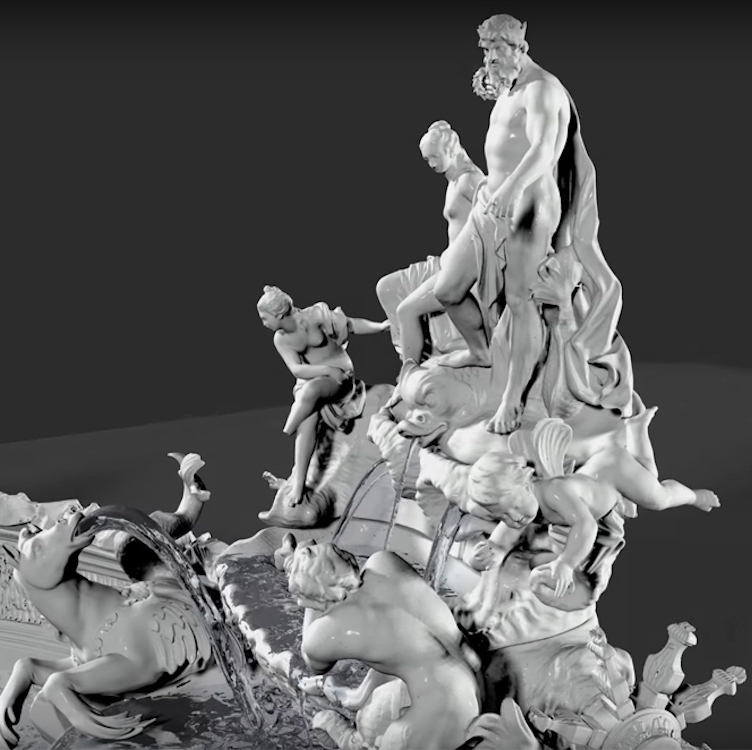I have a lot of respect for restoration work, if only because I imagine that everyone within it must be naturally immune to stress and panic.
Vice’s Creator’s Project quoted one such restorer who said trying to fix broken ceramics was like “trying to solve three puzzles at once,” and that’s not an overstatement. Take a look at this video and, starting with “despair,” list all of the emotions you feel when you watch them pull what looks like three thousand porcelain chunks out of a drawer and tell you that it used to be a priceless Meissen fountain once owned by a German count.
The Victoria & Albert video shines a light on the kind of work that goes into a seemingly-impossible task. This particular project looks as though it employed more than a dozen people to bring the fountain back to life. Everyone from people with tiny picks and brushes to 3D printing technicians to archivists diving through old Meissen factory records had a hand in this.
The Creators Project gets into some interesting territory when they bring up ethics. If you rankled earlier when I mentioned 3D printing, you’re not alone. As a rule, any restorations one does to a work must be reversible. You could call this professional courtesy rather than ethics because you don’t want to make work harder for the restorer who revisits the piece a few hundred years after you.
Still, there are exceptions, gray areas that are up for debate:
One of the Greek vases, a red-figured stamnos from the 5th century B.C., raised some ethical questions. Less than half of the object survives, leaving it unstable, with most of the weight distributed on one side. As a rule, “conservators preserve what has survived, and do not invent,” says Artal-Isbrand. In this case, however, it was deemed acceptable to at least partially complete the vase’s silhouette with plaster fill, since scholars know these vessels are always of the same shape. “It looks unfinished, but it’s an honest presentation,” she concludes.
Here’s to you, restorers! Long may you work without a debilitating stress-related illness. If you work in this field please share some of your war stories with us. We’d love to hear them!
Bill Rodgers is the Managing Editor of cfile.daily.
Do you love or loathe these examples of restoration in contemporary ceramic art? Let us know in the comments.

These Chinese porcelain vases come from the Kangxi Period. They were broken by a visitor who tripped at the Fitzwiliam Museum. Photographs by Cipher Arts.





Just FYI– the term “art conservator” lends more esteem than “restorer”, which tends to denote an amateur who just patches up stuff for aesthetic reasons. In contrast, art conservation is an old and noble profession based on scientific preventive and continuing maintenance as well as “repair”. The field is both tedious and glamorous, requiring a broad skill set, and more museums are recognizing its public appeal. There are lots of fascinating stories on controversial ethics in conservation; a series of in-depth articles on lesser-known art objects would be interesting. (from a former museum-professional-turned-ceramics-artist)